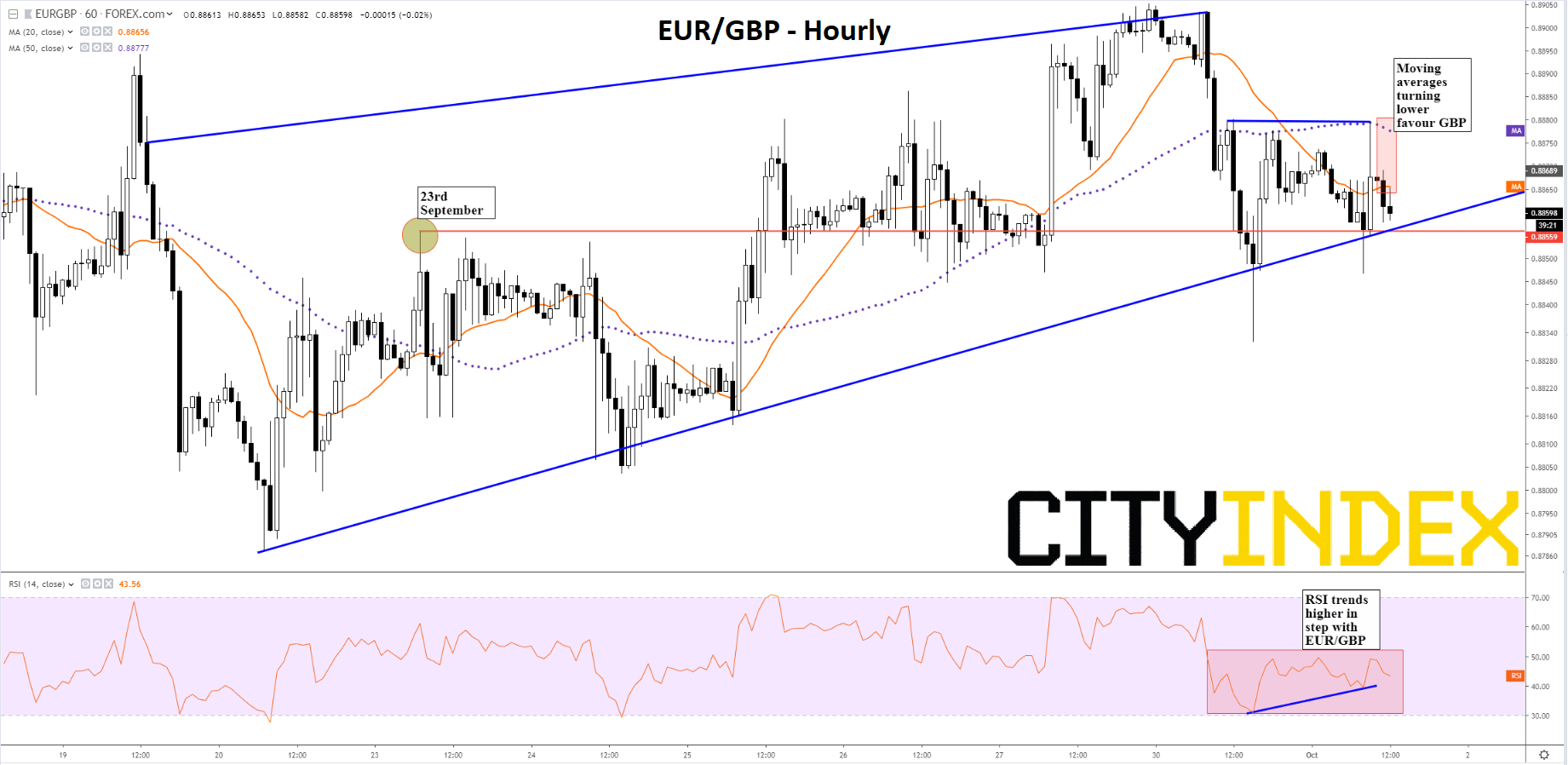Sterling saw a mild lift, though more from better than forecast factory data than Brexit plans
Prime Minister Boris Johnson appeared to walk back proposals that emerged just half a day ago aimed at ending the Brexit impasse. Plans widely reported since late afternoon on Monday pointed to so-called ‘customs clearance zones’ situated 5-10 miles from the Irish border, an alternative to the backstop mechanism that kicks in if Britain leaves the EU with no deal. But the proposals were immediately dismissed by the Irish government as a “non-starter”. Ireland’s opposition and EU officials also signalled that any finalised plans along the lines of the outline would be rejected.
Reports only cited extracts of the plans and emerged with no official corroboration. That’s enabled Johnson to dub the proposals “not right” and “confused”, and to suggest reports were “not talking about the proposals that we’re actually going to be tabling”.
Here's a summary of the government’s outline plan, according to reports
- UK and EU to create up to 10 "customs clearance sites" on both sides of the border, perhaps 5-10 miles back from the land frontier
- Consignments to be checked and cleared at the sites
- Data provided to customs authorities on both sides of the border
- Authorities to decide on the basis of the data which truck or consignments to check
- Goods moving from a customs clearance site on the northern side to a similar site on the southern side to be monitored by GPS via mobile phone data/tracking devices
Even after any finalised deal is sealed with the EU, it will need to win the approval of most MPs, but most particularly Brexit-supporting Conservatives. Their leader in Parliament left open the possibility of compromise, the key test being that a deal must mean ‘a proper split’. In other words, there’s wriggle room as to deciding what’s ‘proper’ and what’s not. First though any such plans must be approved by the EU. And if they’re anything like the leaks, that’s simply not going to happen.
At least British economic data has been less multi-dimensional, offering a line of least resistance for sterling. IHS Markit’s manufacturing purchasing managers index surprised to the upside, but the 48.3 print compared to 47 expected pointed to a sector that was still shrinking, though more slowly than foreseen. Furthermore, there was little doubt that the data for September showed that the resumption of stockpiling by businesses—as a safeguard against disruption in the event that Britain leaves the EU without a deal—was largely responsible for slower output contraction.
The pound reaction has been desultory. Sterling has been mildly bid against the euro, though the pair has been locked in a corrective wedge since hitting the bottom of a 5.8%, 3-week decline (pound rally) between mid-August. The next critical point to watch is whether sterling can crack 88.56p resistance, which was sensitized by the 23rd September EUR/GBP spike high. Confluence with the lower uptrend of the wedge is a negative for pound buyers, particularly whilst a rallying RSI in the hourly view projects short-term follow through for euro buying. Against the single currency, 20- and 50-interval averages are turning lower, suggesting that the euro uptrend may at least lose traction soon. All the more reason why EUR/GBP’S recent rising line and 88.56p support are important to watch points.
EUR/GBP - Hourly

Source: City Index



